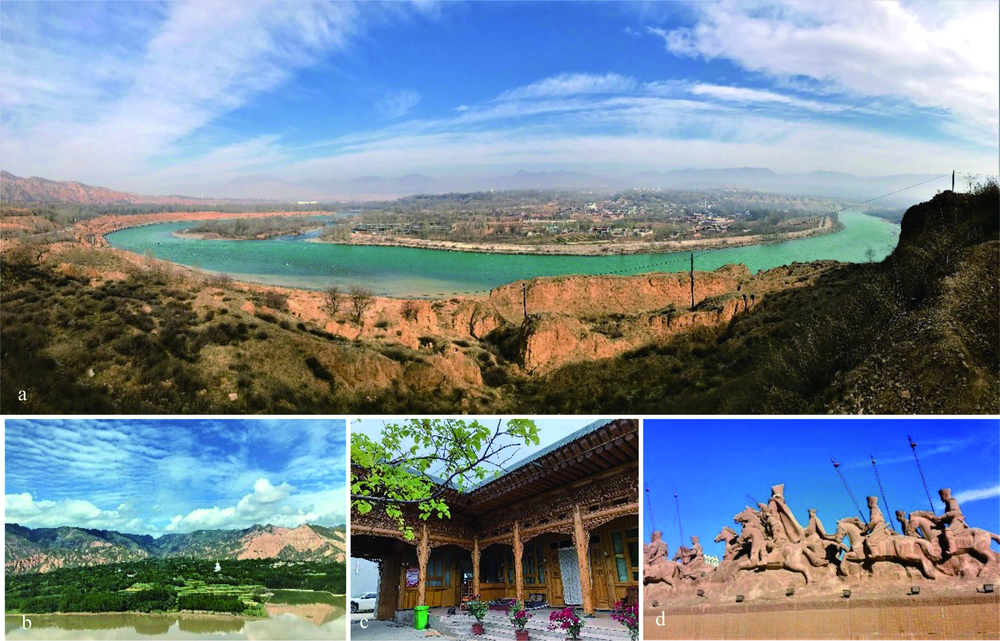

JOURNAL OF NATURAL RESOURCES >
The locality and adaptability of human settlements in the Yellow River Basin: Challenges and opportunities
Received date: 2020-07-20
Request revised date: 2020-08-03
Online published: 2021-03-28
Copyright
Due to the particularity of natural environment and geographical location, the human settlement environment of the Yellow River Basin is in a complex process of constant changes and is always facing severe challenges. The coupling process of human environment space with natural and social elements originates from the dynamic, comprehensive and systematic adaptation mechanism presented in the process of human-land relationship change, so revealing the system adaptation mechanism is the key to solve the human environment dilemma in the Yellow River Basin. Therefore, based on the perspective of "locality and adaptability", this paper invited experts and scholars from Qinghai, Gansu, Ningxia, Inner Mongolia, Shaanxi, Shanxi, Henan and Shandong along the Yellow River and other provinces. They interpreted the characteristics of human settlements in the Yellow River Basin from the perspectives of natural geography, social economy, urban and rural development, and heritage protection, and sought sustainable strategies to adapt to China's new urbanization path. The main points are stated as follows: On the whole, the adaptability of human settlements in the study area has multi-scale spatial correlation and historical geographic dependence. The Yellow River Basin has an important ecological function, but the natural environment in different regions is facing such problems as land salinization, soil erosion and pollution, etc., so it is necessary to promote the greening of human-land coupling relationship. The Yellow River Basin, especially the cities along the upper reaches of the river, have distinct characteristics of openness, ethnic cultural diversity and integration. Due to the complex natural environment, caves and other special settlements have been formed in the middle and upper reaches of the Yellow River. In the process of rapid urbanization, they are faced with transformation and disappearance, retaining the cultural genes of traditional settlements, and it is urgent to classify and treat them differently to promote their healthy evolution. The internal and external radiation drive of urban agglomeration in the Yellow River Basin is the foundation of high-quality development throughout the river basin, and the optimization and upgrading of urban structure is an important way to promote high-quality development. To achieve sustainable development, scientific and technological innovation and industrial structure transformation and upgrading are also needed.

WANG Fang , MIAO Chang-hong , LIU Feng-gui , CHEN Xing-peng , MI Wen-bao , HAI Chun-xing , DUAN De-gang , WANG Jin-ping , ZHANG Zhan-cang , WANG Cheng-xin . The locality and adaptability of human settlements in the Yellow River Basin: Challenges and opportunities[J]. JOURNAL OF NATURAL RESOURCES, 2021 , 36(1) : 1 -26 . DOI: 10.31497/zrzyxb.20210101
| [1] |
陆大道, 孙东琪. 黄河流域的综合治理与可持续发展. 地理学报, 2019,74(12):2431-2436.
[
|
| [2] |
|
| [3] |
赵建吉, 刘岩, 朱亚坤, 等. 黄河流域新型城镇化与生态环境耦合的时空格局及影响因素. 资源科学, 2020,42(1):159-171.
[
|
| [4] |
张宁宁, 粟晓玲, 周云哲, 等. 黄河流域水资源承载力评价. 自然资源学报, 2019,34(8):1759-1770.
[
|
| [5] |
汪芳, 李薇,
[
|
| [6] |
|
| [7] |
|
| [8] |
吴宏岐, 张志迎. 黄泛平原古城镇水域景观历史地理成因初探. 地域研究与开发, 2012,31(1):145-149.
[
|
| [9] |
侯继尧. 中国窑洞. 郑州: 河南科学技术出版社, 1999: 8-10.
[
|
| [10] |
刘沛林, 刘春腊, 邓运员, 等. 中国传统聚落景观区划及景观基因识别要素研究. 地理学报, 2010,65(12):1496-1506.
[
|
| [11] |
|
| [12] |
宦震丹, 王艳平. 地方感与地方性的异同及其相互转化. 旅游研究, 2015,7(2):64-68.
[
|
| [13] |
李小云, 杨宇, 刘毅. 中国人地关系的历史演变过程及影响机制. 地理研究, 2018,37(8):1495-1514.
[
|
| [14] |
张冉, 王义民, 畅建霞, 等. 基于水资源分区的黄河流域土地利用变化对人类活动的响应. 自然资源学报, 2019,34(2):274-287.
[
|
| [15] |
李林, 李凤霞, 朱西德, 等. 黄河源区湿地萎缩驱动力的定量辨识. 自然资源学报, 2009,24(7):1246-1255.
[
|
| [16] |
许炯心. 黄河中游径流可再生性对于人类活动和气候变化的响应. 自然资源学报, 2015,30(3):423-432.
[
|
| [17] |
|
| [18] |
谢端琚. 甘青地区史前考古. 北京: 文物出版社, 2002: 11.
[
|
| [19] |
|
| [20] |
范晔. 后汉书·西羌传. 北京: 中华书局, 1965.
[
|
| [21] |
班固. 汉书·赵充国传. 北京: 中华书局, 1982.
[
|
| [22] |
刘峰贵. 青海祁连地区地缘与族居社区邻际关系的形成及变迁. 青海民族研究, 2003,14(3):77-80.
[
|
| [23] |
陈琼, 张镱锂, 刘峰贵, 等. 黄河流域河源区土地利用变化及其影响研究综述. 资源科学, 2020,42(3):446-459.
[
|
| [24] |
宁志忠, 王灵恩, 虞虎, 等编. 中国乡村地理. 北京: 中国建筑工业出版社, 2019: 8.
[
|
| [25] |
赵之枫. 传统村镇聚落空间解析. 北京: 中国建筑工业出版社, 2015: 1.
[
|
| [26] |
郎树德. 大地湾遗址房屋遗存的初步研究. 考古与文物, 2002, (5):12-17.
[
|
| [27] |
汪国富. 从大地湾遗址浅析我国古代房屋建筑发展演变的历史. 史前研究, 2006, (0):214-220.
[
|
| [28] |
叶振维, 路达, 白妙馨. 内蒙古黄河流域水污染形势分析. 环境与发展, 2014,26(4):100-103.
[
|
| [29] |
赵水霞, 李畅游, 李超, 等. 基于3S技术的黄河内蒙古段河道演变特性分析. 水利水电科技进展, 2016,36(4):70-74.
[
|
| [30] |
王建国. 关于沿黄生态带特色文化旅游产业发展的思考. 时代经贸, 2020, (9):47-48.
[
|
| [31] |
宋启超. 从“黄河百害唯富一套”到“绿色发展实现塞上江南新崛起”. 河套学院学报, 2017,14(2):1-3, 14.
[
|
| [32] |
朱士光. 论内蒙古河套地区历史时期河湖水系的变迁与土壤盐渍化问题. 人民黄河, 1989, (1):58-63.
[
|
| [33] |
赵德润, 刘健, 张玉林, 等. 黄河安澜五十年. 瞭望新闻周刊, 1996, (43):10-17.
[
|
| [34] |
张占仓, 盛广耀, 李金惠, 等. 无废城市建设: 新理念新模式新方向. 区域经济评论, 2019, (3):84-95.
[
|
/
| 〈 |
|
〉 |